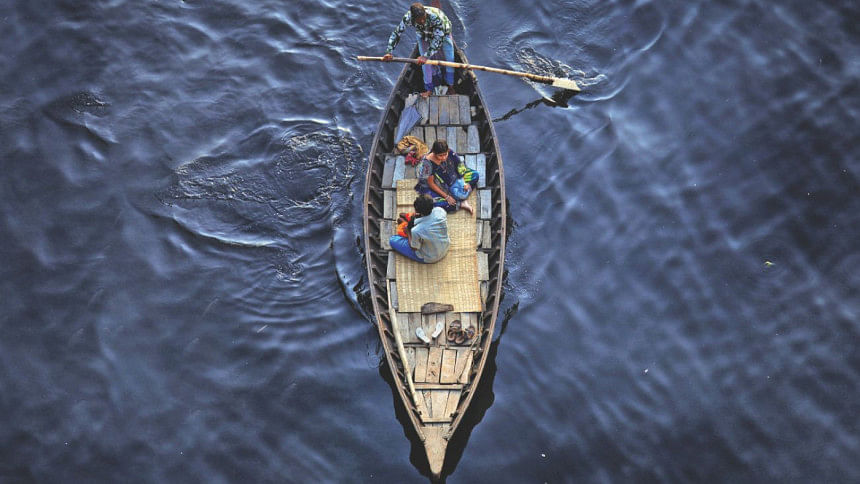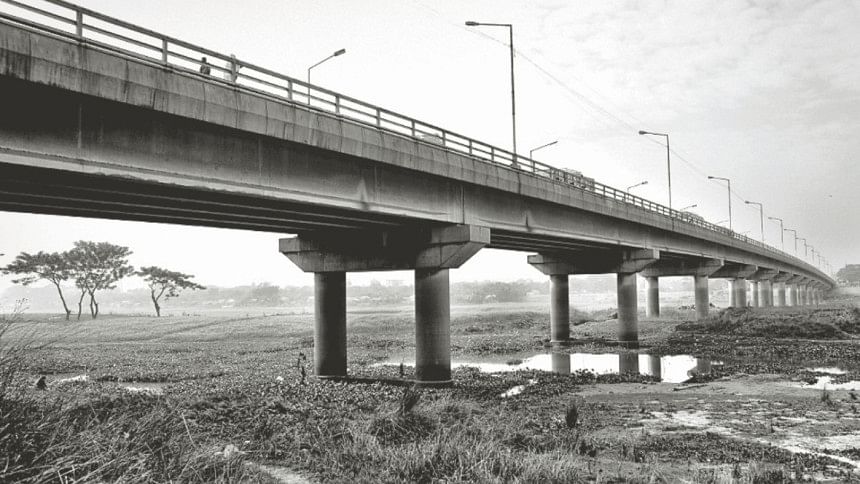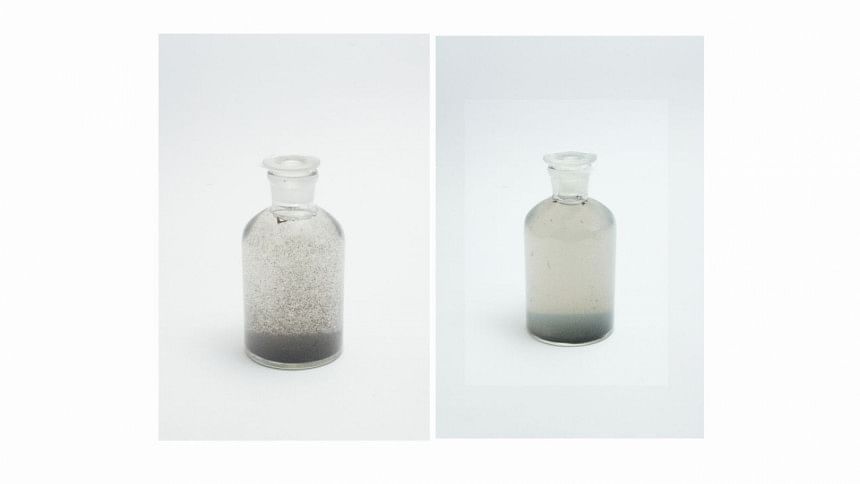The gradual dying of our rivers


The rivers winding through our delta make for a beautiful landscape as well as being one of our greatest assets—we depend on it for everything from our food to transport to an abundance of flora and fauna. Yet our rivers have been allowed to deteriorate to such an extent that these are no longer aesthetically, economically or ecologically viable.
No doubt there are 'classical' reasons for the deterioration of our rivers. There are dams and diversions on the upper riparian regions. Imbalances in water flow across down stream of barrages and dams disrupt the sedimentation and siltation process which cause erosion. And we know the devastating impacts of erosion.
The major erosion-prone rivers in Bangladesh are the Brahmaputra, Ganges, Teesta, Manu, Khowai, Karnaphuli, Someswari and Tangon. The flow of most of the rivers, except for the Brahmaputra and Jamuna, have been interrupted with dams and barrages. Meghna River is highly erosion prone because of its vast flow and volatility.
There is indiscriminate encroachment and pollution, especially into the rivers adjacent to city and industrial areas. According to a research conducted by Riverine People in 2016, 29 rivers in the country, located adjacent to cities, have been affected by pollution and encroachment.
Whenever we focus on river pollution or encroachment, it's always the Burgiganga, Turag, Balu or Shitalakhya that come under the scanner. There are times when the Karnaphuli from Chittagong gets attention as well. However, the fact remains that there are 24 more rivers, like the Lauhajang in Tangail, the Narod in Natore or the Old Brahmaputra in Mymensingh which are suffering in the same vein.
While pollution gradually reduces fisheries and biodiversity values of the rivers, and livelihoods of river-dependent communities; encroachment is shrinking navigability.

It may be worth mentioning that the 24,000 km inland waterway that we got after independence was our main mode of transportation once upon a time. It was the cheapest and safest transportation for goods and passengers as well. Years on though, the navigability has significantly reduced because the river depth has decreased. Hydro-geographical dynamics and human intervention were factors in decreasing the navigability. However, some of the major rivers have faded away simply because they were maintained properly.
For instance, the Brahmaputra River had no barrages or diversions in the upper riparian regions. Till 1965, the river was actually used as a regular shipping route from Kolkata to Guwahati. But we have failed to maintain this invaluable inland waterway. Today, Bangladesh's navigable waterways stretch to just about 3,865 km during the lean season. It expands to 5,968 km during the rainy season.
Aside from encroachment and pollution, sand mining is another threat that hundreds of rivers have to deal with it in the present context.

Whatever steps, initiatives, plans, projects are being taken for rivers, sadly and surprisingly, somehow, seem to be backfiring. Bangladesh is a unique developing country where dozens of directives have come from the higher courts of the country to save, protect, and restore the rivers. And, not many countries have so many laws, regulations and institutions relating to rivers. Yet, our rivers continue to suffer.
For example, the High Court has directed authorities to demark, primarily, the four rivers surrounding Dhaka City. The concerned district authorities have implemented the directives in such a manner that the demarcation process benefits the river grabbers. There are dozens of other similarly frustrating examples.
In fact, Bangladesh has become a perfect paradox of river restoration process. Protection or development works are being implemented and the rivers are deteriorating further. To us, the river activists of Bangladesh, this situation is more unacceptable. Because it is eroding both ways; after all in a sense, it is the public money that is being spent to kill the rivers.

Sheikh Rokon: writer and river-researcher, Secretary General of Riverine People





Comments